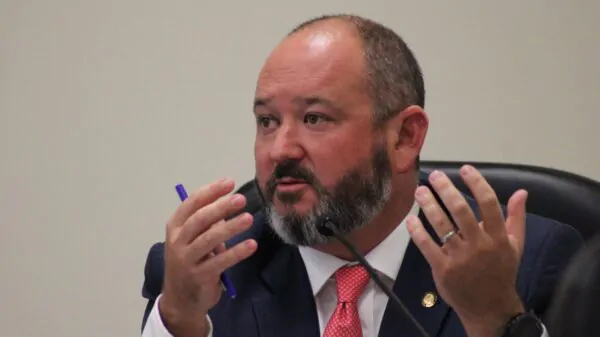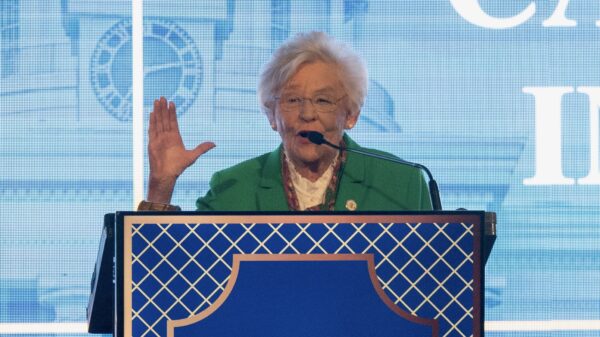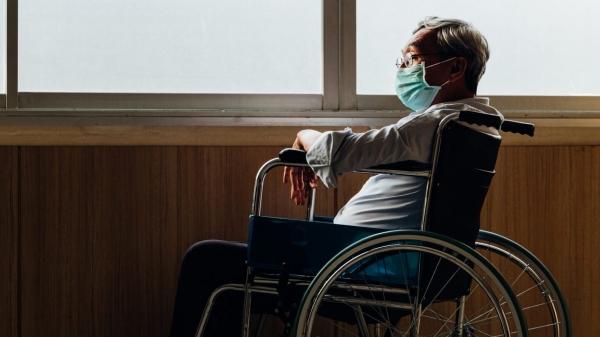Walter Lee McCoy, 94, died on Nov. 30 inside the infirmary of Alabama’s Hamilton Aged and Infirmed prison. After his death, McCoy, who was being treated for an advanced medical condition, tested positive for COVID-19.
McCoy joins 43 other incarcerated men in Alabama prisons who’ve died while positive for COVID-19. The Alabama Department of Corrections has struggled to control the spread of the virus, which has infected at least 1,033 incarcerated people and at least 729 workers.
Two prison workers have died from the deadly disease.
On Tuesday evening, ADOC announced 105 inmates in the Bibb Correctional Facility tested positive for COVID, bringing the total of infected inmates there to 161.
Additionally, nine inmates at the Donaldson Correctional Facility and four at the Easterling Correctional Facility also recently tested positive. Out of 3,441 inmates who volunteered to be tested in those four facilities, 118 tested positive.
Because testing isn’t mandatory, and because several inmates have told APR in recent weeks that they decline to be tested even if they have symptoms, for fear of being quarantined alone, it’s unclear the true extent of the spread of COVID-19 in Alabama’s prisons, most of which house inmates in dorm-like settings where social distancing is impossible.
It wasn’t until September that ADOC began broader, and all voluntary, testing of inmates and staff, despite calls from advocates for months to begin doing so, and even after that testing began, it was slow-going.
As of Sept. 30, ADOC had tested just 2,738 of the state’s approximately 22,000 inmates.
ADOC spokeswoman Samantha Rose in a message to APR on Wednesday said that the department is providing free COVID-19 tests to ADOC staff and contracted healthcare staff using fixed and mobile testing sites.
“Additionally, we are testing inmates in facilities that house large numbers of medically vulnerable inmates,” Rose said.
ADOC has conducted voluntary testing among inmates at 18 of the state’s 26 facilities, according to Rose’s statement, and has tested staff on a voluntary basis in 22 facilities. ADOC hadn’t replied to a question as of Wednesday afternoon asking how many inmates in those facilities had been tested.
Responding to a question regarding whether ADOC has discussed with the Alabama Department of Public Health the need to vaccinate those incarcerated persons most at risk from coronavirus, Rose said “this is an important topic, and one on which we are working closely with the Alabama Department of Public Health.”
“Once information becomes available, we will share it with the public via our ongoing COVID-19 updates,” Rose said.
Despite the dangers facing older and sick incarcerated people, and a large number of older and sick inmates who are at greater risk from COVID-19, just 13 people had been released on medical furloughs as of September, the latest report ADOC has made publicly available.
There have been concerns for months about how ADOC has managed the health crisis. One worker at Hamilton Aged and Infirmed told APR in May that another officer who was exposed to a COVID-19-positive inmate at a local hospital was forced to immediately return work at the Hamilton facility.
Hamilton Aged and Infirmed houses the state’s inmates most vulnerable to COVID-19, older inmates who have medical conditions.
Dillon Nettles, policy and advocacy director at the ACLU of Alabama, in a message to APR on Tuesday, said that ADOC is obligated to provide appropriate safety and health measures for people incarcerated in their care.
“And after multiple lawsuits and Department of Justice investigations exposing the unconstitutional conditions and treatment within ADOC facilities, we expect the department to take their responsibility more seriously than ever before,” Nettles said. “The bottom line is that ADOC has failed in their duty to mitigate the impact of COVID-19 in its facilities, and Mr. McCoy is the latest victim of their neglect.”
“Over the summer, ADOC Commissioner Jeff Dunn assured the public that the department would pursue mass testing for every person in custody, yet today they still are far short of that goal with just 7,000 people tested,” Nettles said, adding that confirmed cases among staff, who also pose a risk of rapidly spreading the infection within facilities, are at the highest levels seen.
As of Dec. 4, the latest information made publicly available by ADOC, there were 240 active cases among prison staff.
McCoy pleaded guilty on Aug. 20, 2001, at the age of 75, to shooting to death a man in connection to an argument over money the man owed McCoy, according to court records and news accounts. He had served 18 years and 11 months of his 20-year sentence when he died.
Other recent deaths inside Alabama prisons were David Beech, 64, who died on Oct. 31 at St. Clair Correctional Facility’s infirmary where he was being treated for an end-stage medical condition. He tested positive for COVID-19 after death, according to ADOC.
Jesse Burrell Jr., 56, died one day after McCoy inside the same infirmary at the Hamilton Aged and Infirmed facility. He too tested positive for coronavirus after death and was being treated for an end-stage medical condition.
David Lewis Moore, 63, died on Dec. 3 at a hospital near Limestone Correctional Facility, where he was taken on Nov. 24 after exhibiting symptoms of COVID-19. Moore, who also had pre-existing medical conditions, tested positive at the hospital, according to ADOC.
Late Wednesday evening, ADOC announced five more deaths of incarcerated people who tested positive for COVID-19 either before or after death:
- Jeffery Bailey, 54, died Nov. 27 at St. Clair prison’s infirmary and tested positive after death. He was being treated for end-stage, preexisting medical conditions, according to ADOC.
- Robert Williams, 78, was taken from Hamilton Aged and Infirmed to a local hospital on Nov. 29 after exhibiting symptoms of COVID-19, where he tested positive. He died on Dec. 7.
- John Fortenberry, Jr., 77, was taken to a local hospital from Bibb Correctional Facility on Nov. 26 for treatment of an unrelated medical condition, where he tested positive for COVID-19. He died on Dec. 7.
- Glenn Nelson Anderson, 73, died on Dec. 8 at Hamilton Aged and Infirmed after being exposed to someone with COVID-19. He tested positive on Nov. 23.
- Gregory Allan Brown, 61, was taken from St. Clair prison to a local hospital on Nov. 28 after exhibiting symptoms of coronavirus. He tested positive upon admission on and died on Dec. 9.



















































